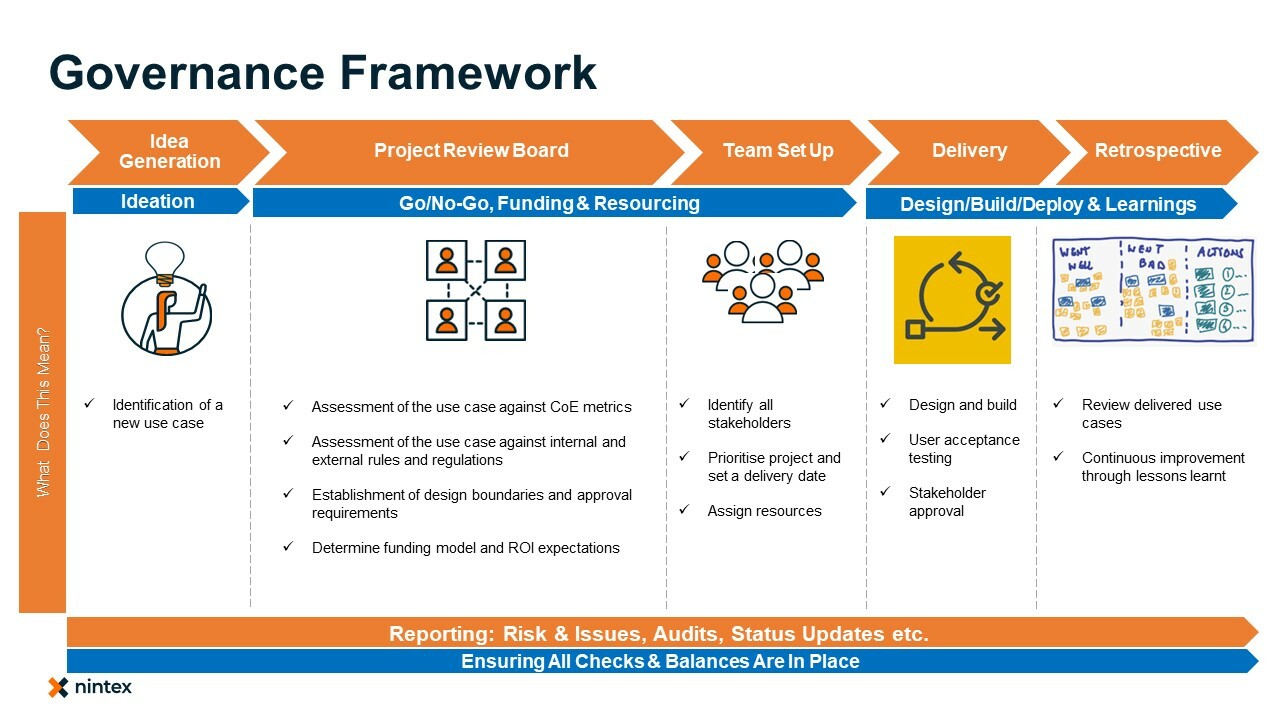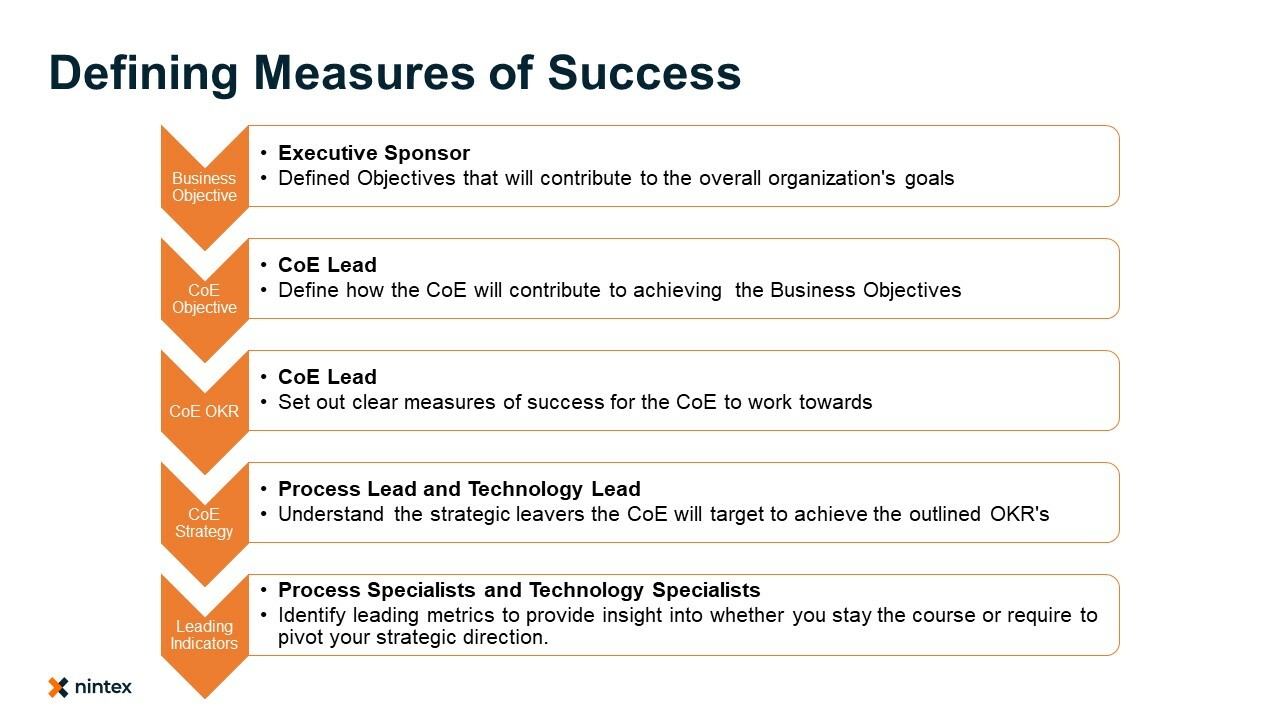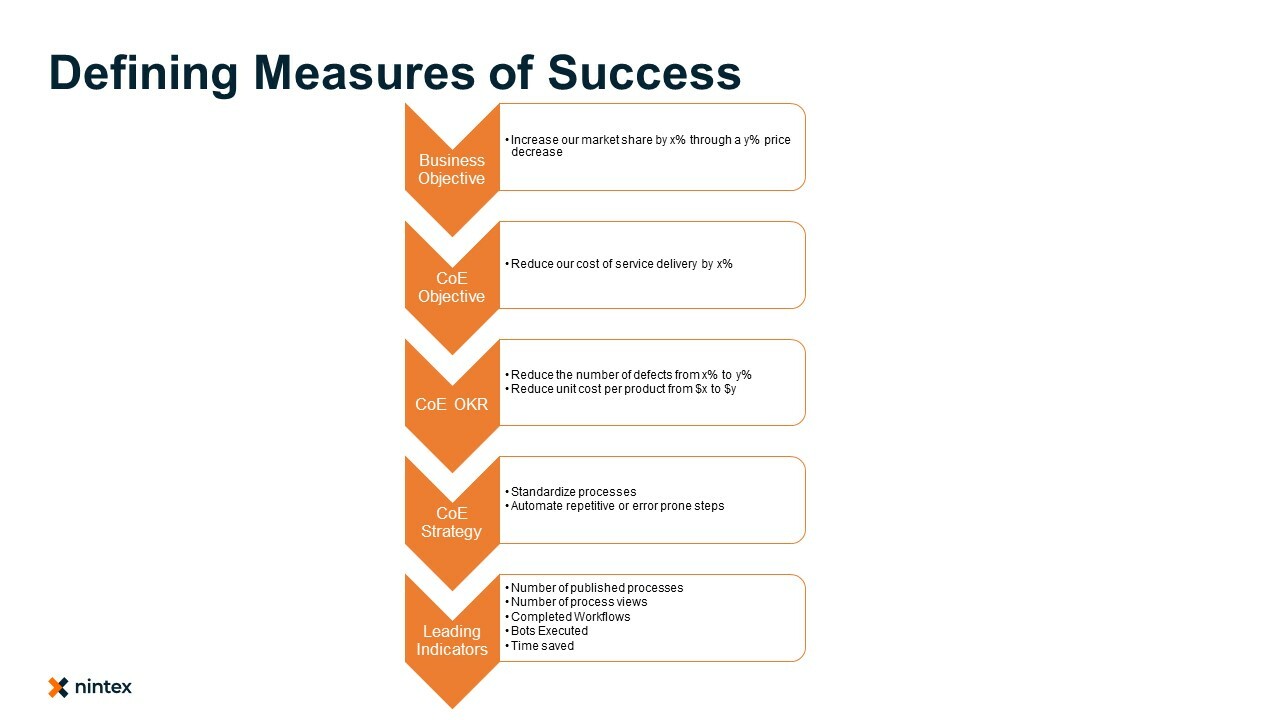In our last episode we discussed the importance of Governance and presented a Framework to help guide you through the process. Our ideas have been designed, developed and deployed but how do we know if we have been successful? This week we discuss ways to measure the success of your CoE.
Defining Measures of Success - you need to determine what success looks like for your Center of Excellence. Once your OPEX machine starts ticking along you’re going to identify far more use cases than your Center of Excellence can deliver, so having a clear idea of what success looks like will enable you to decide which request are worth building, as well as prioritize your backlog. You can also use these metrics as a baseline for improvement and report progress against them.

Referring back to the Governance Framework, once an idea has been generated, it needs to be assessed by the Project Review Board to determine if it should be built or not. As part of this assessment, the use case should be assessed from the perspective of ensuring that, by allocating resources to its development, the CoE is able to deliver value to the business. In order to answer this question, it is crucial that the success factors for the CoE itself have been established. Below is an example of a framework that might be used to establish these success factors in a way that makes it easy to (a) assess the suitability of any given use case and (b) measure the performance of the CoE.

Business Objective:
These Objectives are typically driven through your Executive Sponsor (working in coordination and collaboration with other executives) to define with success looks like. This will generally involve determining which existing business objectives the CoE will be tasked with contributing towards.
CoE Objective:
Once the Executive Sponsor defines which business objectives the CoE will be focused on, the CoE Lead will define how the CoE will contribute towards achieving these business objectives. When assessing use cases, the CoE Lead must ensure that they contribute to achieving these specific business objectives.
CoE OKR:
Next, the CoE lead must set out clear measures of success for the CoE to work towards. These should be done at a granular level, for examples setting tasks, detailing specific dates, clear and explicit outputs or savings, etc.
CoE Strategy:
The Process and Technology leads must then identify how they are going execute. In creating this strategy, they should consider how they are going to use the three levers of Operational Excellence (OPEX), namely:
- The Speed at which the organization produces outputs
- The Cost of producing outputs and/ or
- The Quality of the outputs the organization produces
Leading Indicators:
Identify leading metrics to provide insight into whether you stay the course or require pivoting your strategic direction. A great question to begin with is what is the business impact of this project? Where the business value is your first objective is to answer the question of how you quantify and measure the impact to the business. After you understand how you measure the business impact, you can calculate or estimate the expected impact. What is the opportunity to change or improve the business?
Let's take a look at an example of how this framework might be used:

We have come a long way in creating the foundation for a successful Center of Excellence. We have the underpinnings of Operational Excellence, a variety of CoE approaches to use, assessed the maturity of our operation, structured it while applying a governance model and collaborated with our Executive Sponsors of Success Criteria. The only thing we need now is the proper funding. In our next episode we will discuss the appropriate funding models necessary to create the CoE but ensure it’s viability and success well into the future.

